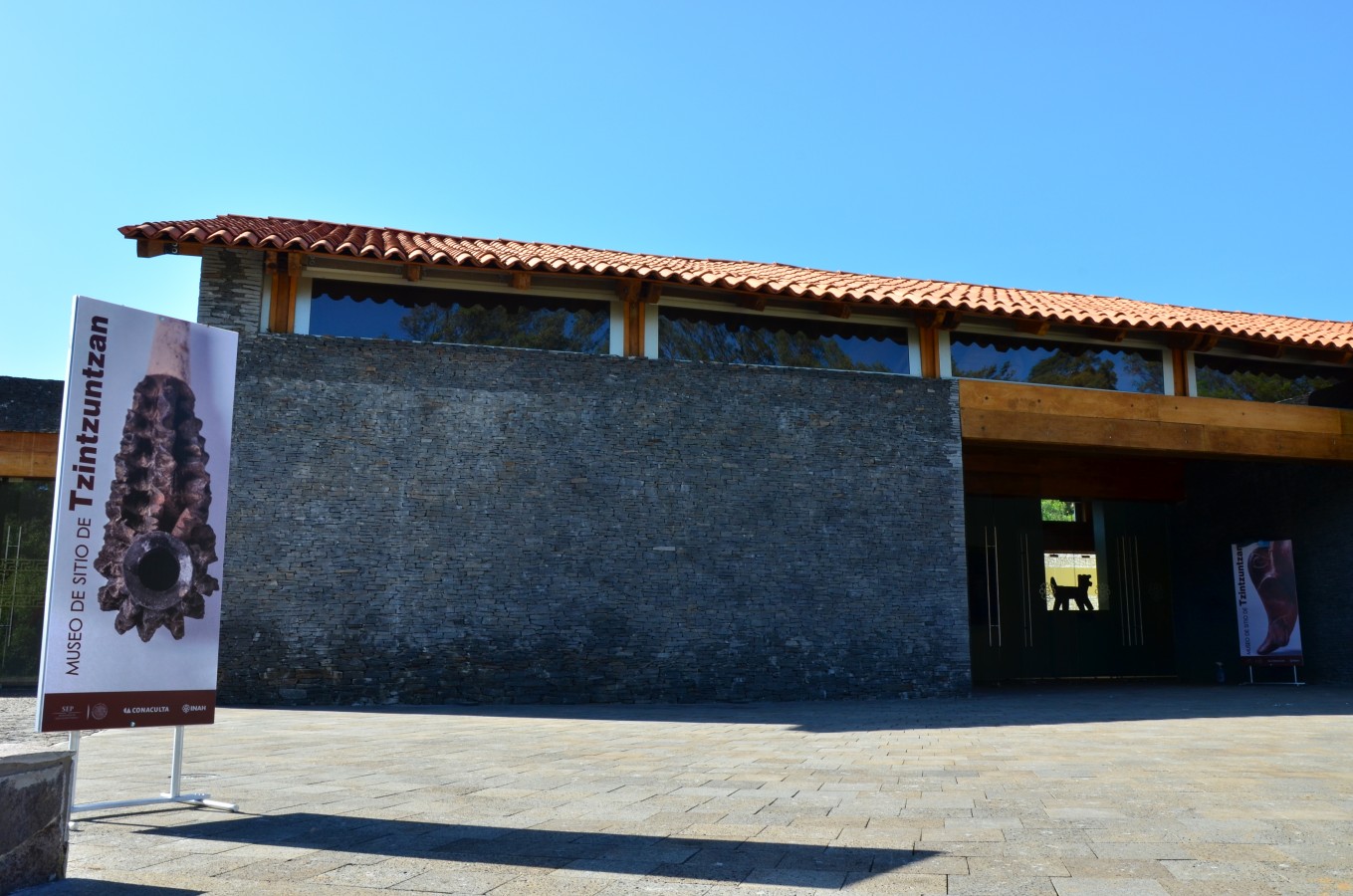Visitors to the museum can see the most important archeological finds of Tzintzuntzan and finds from other contemporary sites around Lake Patzcuaro. Notable among these in terms of their importance are a stool shaped like a coyote made out of basalt, from nearby Ihuatzio, which was undoubtedly used by the most important dignitaries of the state of Tarasco, and another piece also carved in basalt which shows the seated figure of a man with a coyote head. Man’s relationship with certain animals demonstrates one of the most important aspects of the ancient Tarascans’ religious practice.
Another important feature of life in Tzintzuntzan was the development of metallurgy to an extent that was unequaled in Mesoamerica. The ancient metallurgists used various techniques such as hammering, laminating, embossing, forging and casting in order to make working tools, or gold and silver jewelry, and even alloys using tin and arsenic. Copper was the most commonly used metal, extracted from the mines in the south of the Tierra Caliente 75 miles away, where it was forged and then brought to the city. The gold and silver smiths of Tzintzuntzan worked these and other metals to produce rattles, pendants, pincers and ornamental objects for the great lords and priests. Examples of the jewelry can be seen in the museum’s display cases.
In this way the Tzintzuntzan site museum offers visitors a panoramic view of the importance of the Tarascan state and its ancient capital, through its materials. There are two interpretative levels. Firstly, the exhibition employs a spatial framework covering the majority of the present-day state of Michoacan, areas of Guerrero, the State of Mexico, Guanajuato and Jalisco. Secondly, it employs a temporal framework, presenting different periods, from the appearance of these groups in the basin of Lake Patzcuaro, up to the role played by the city upon the arrival of the Spanish in the sixteenth century.







